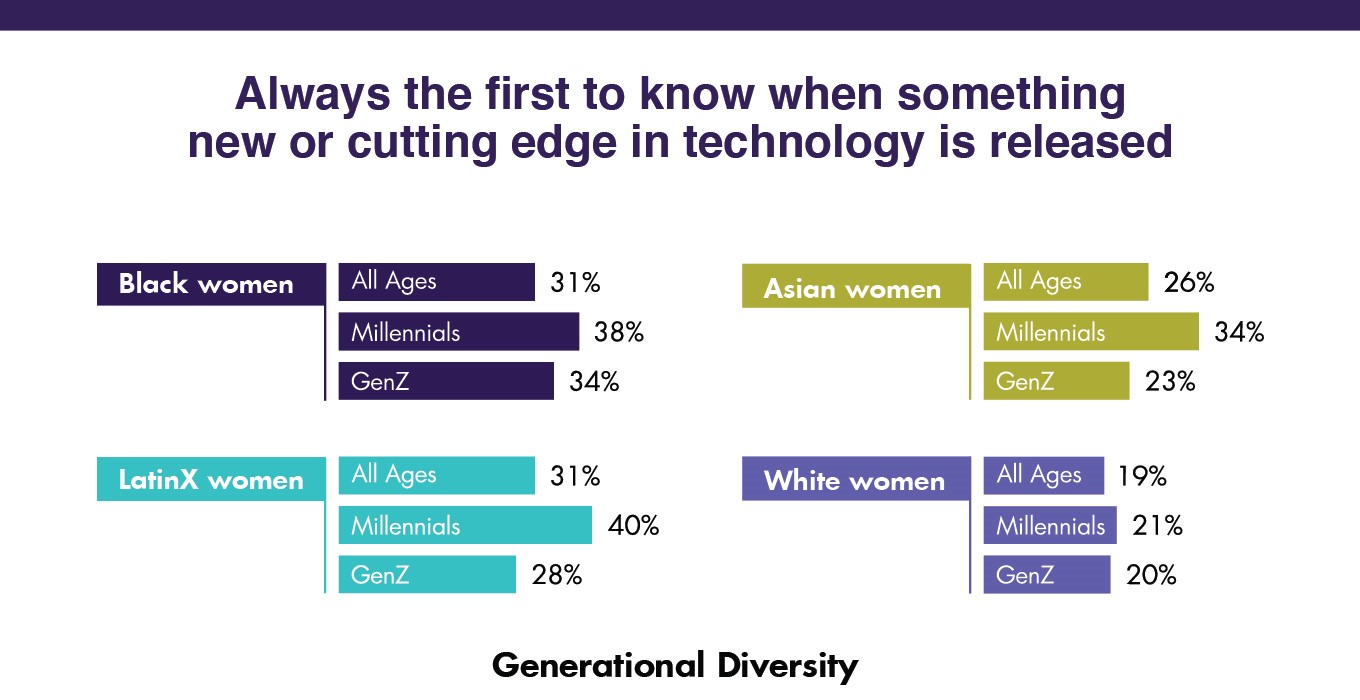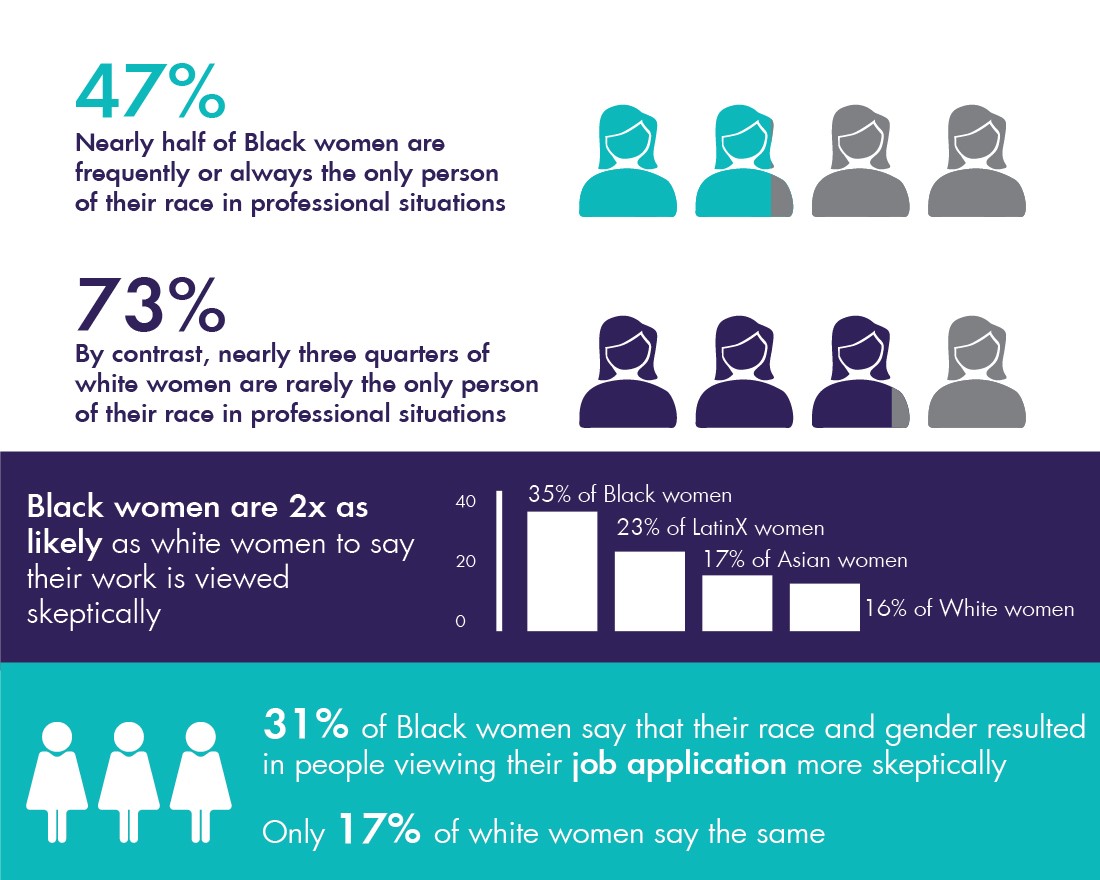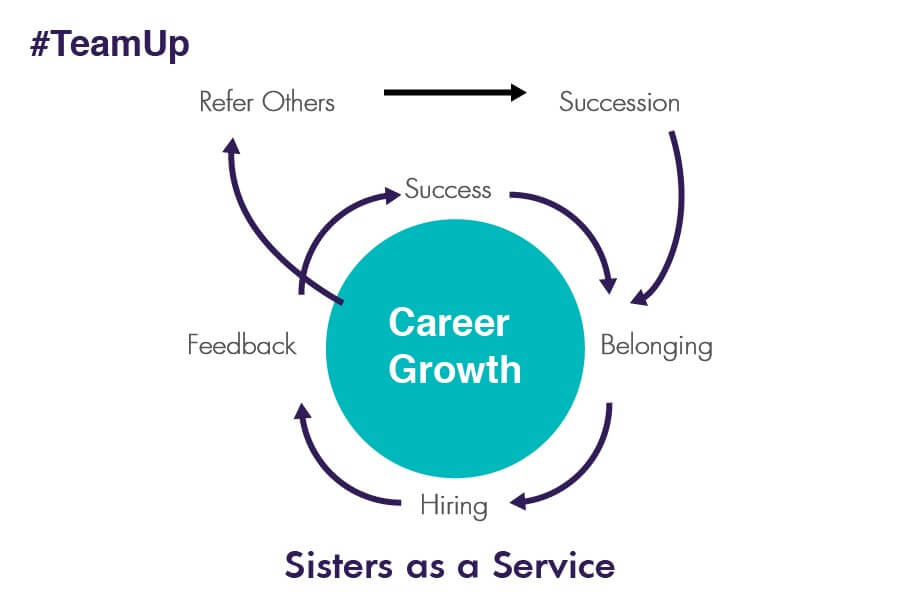

The significant impact of Black and other women of color has been widely acknowledged in a number of fields, among them, politics, sports, medicine and entertainment, but the impact of Black and women of color in business has been studied intermittently and imperfectly until the Women of Color in Business: Cross--Generational Survey©, commissioned for “A Blessing: Women of Color Teaming Up to Lead, Empower and Thrive,” by Bonita C. Stewart and Jacqueline Adams.
The 2019 Women of Color in Business: Cross Generational Survey © was conducted by Quadrant Strategies, a leading brand research firm. Quadrant surveyed 4,005 desk workers, who identified as women, including 1,604 African American women, 1,600 Latinx women, 403 Asian women, and 401 white women. Respondents were surveyed from October to November 2019 and were asked 91 questions, based on 13 topics. With a 95% confidence interval, the margin of error for African American women and Latinx women is ±2.45%; the margin of error for Asian women is ±4.88%; and the margin of error for white women is ±4.89%.
The team lead was Senior Consultant Hannah Leverson.

Stewart and Adams have coined the phrase, Generational Diversity, to highlight the nuances that are being overlooked in today’s Diversity and Inclusion conversations. The most important investments a company will make are the people they employ. From their research, the authors found that Gen Z and Millennial workers, especially those of color, are mission-driven, innovative, confident and are demanding workplaces that provide the support they need to thrive. These insights are critical to companies which are developing strategies to retain these workers of color who have, historically, been challenging to source.

Despite numerous examples of “winning” by women of color, the data showed several disheartening findings. The “Only” still exists in far too many business environments. 47% of Black women, almost half, say they are frequently or always the ONLY person of color in a professional situation. “Unicorns.” By contrast, 73% of white women reported that they are RARELY the only person of their race in a professional setting. The 47% figure is troublesome because “only-ness” has distinct costs.Black women are twice as likely as white women to say that their work is viewed skeptically. 23% of LatinX and 17% of Asian women also held this view.

“A Blessing: Women of Color Teaming Up to Lead, Empower and Thrive,” received acclaim from the Library Journal citing “anyone interested in the role of Black women, and women in general, in business will learn a great deal from this well-argued book.”



As the world continues to evolve at a warp speed, companies are beginning to recognize the need for talent to fuel their competitive positioning. Stewart and Adams recognized that their survey, along with other confirming data, showcases a field of “untapped” talent. Their Talent Convergence Theory outlines the driving business forces.
It all starts with the major advancements women of color have made and their influence as true “assets” to the economy and social order.
- U.S. Census data predict that women of color will be in the majority by 2060, if not before and that more Black women are earning college degrees than any other demographic of the US population.
- Black women are three times more likely to aspire to a position of power with a prestigious title than white women, according to Harvard Business Review research.
- Our survey confirmed a Nielsen finding, that Black and LatinX women—especially our younger Gen Z and Millennials —are more innovative, more likely to be first adopters of new technology.
- American Express studies estimate women of color-owned businesses generated $422.5 billion in revenue in 2019 and their 2018 study found that firms owned by Black women from 2007 to 2018 grew by a whopping 164%.
- Nielsen predicts that Black women will control some $1.5 trillion in consumer purchasing power by 2021, a number larger than the GDP of Australia.
The deficits, however, are undeniable. Business gaps persist. In 2019, the Center for Talent Innovation found that Black women fill only 3.2% of the senior leadership roles at large companies in the U.S. and just 0.8% of all Fortune 500 CEO positions.
Despite the distressing deficits, Stewart and Adams are optimistic.As their Talent Convergence Theory illustrates, in between the obvious assets and deficits is a “greenfield” of potential untapped talent, specifically innovative, ambitious, confident women of color.The authors see unstoppable flywheels of progress in motion,driven partly by demographic trends that presage imminent spikes in minority populations in the U.S. (New York City and California, for example, are already majority minority), and recent regulatory and societal changes (e.g., California’s and Nasdaq’s demands for more board representation for underrepresented minorities).
These trends support an increased return on investment for companies that embrace and nurture the burgeoning pool of women of color, of this underrepresented talent, with a business model that creates a sense of belonging and well-being.
The notion of “sisterhood” - women supporting other women at work - was almost unanimously endorsed by the desk workers in the survey. Teaming Up is a scalable proposition to advancement and to increasing the camaraderie among women of color. The authors call it “SaaS” -- Sisters as a Service. Career growth is at the center of our “flywheel” and it comes from referring others. By supporting referrals, we create strong succession planning for every role leadingto the C-suite and a pipeline for venture funding. As women of color, we can create a joyous sense of belonging through career sisterhood and hiring more of us in multiples.
When we team up, younger women can provide energy just as older ones provide wisdom. To illustrate what we call “Generational Alliances,” we use a metaphor from the natural world, zebras and ostriches. Zebras can’t see very well but they can SMELL and HEAR predators approaching. Ostriches can’t hear or smell wellbut they do SEE danger ahead. Together, they help one another thrive.



If you want to go far, go together
"Bonita Stewart and Jacqueline Adams have answered the call to Black Women everywhere to team up and use our special skills, strengths and experiences to take our seat at the table. The knowledge and research in this book provides the blue print for personal and professional growth designed to create change and success for generations of “Blessings” to come."


"Bonita Stewart and Jacqueline Adams have answered the call to Black Women everywhere to team up and use our special skills, strengths and experiences to take our seat at the table. The knowledge and research in this book provides the blue print for personal and professional growth designed to create change and success for generations of “Blessings” to come."




